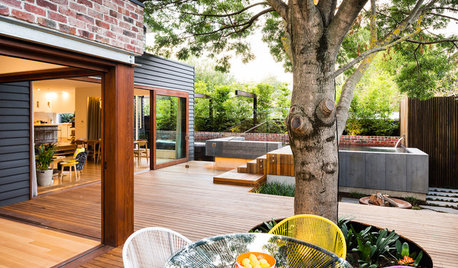What is everyone growing in their winter garden?
loblolly9
18 years ago
Featured Answer
Sort by:Oldest
Comments (39)
slaphead
18 years agolast modified: 9 years agoorganica
18 years agolast modified: 9 years agoRelated Professionals
Citrus Heights Landscape Architects & Landscape Designers · Ashburn Landscape Architects & Landscape Designers · Lowell Landscape Architects & Landscape Designers · Piqua Landscape Architects & Landscape Designers · Port Royal Landscape Architects & Landscape Designers · Brentwood Landscape Contractors · Allentown Landscape Contractors · Addison Landscape Contractors · Beachwood Landscape Contractors · Canton Landscape Contractors · Lyndhurst Landscape Contractors · Peachtree City Landscape Contractors · Petaluma Landscape Contractors · Tustin Landscape Contractors · Frisco Roofing & Gutterslantanascape
18 years agolast modified: 9 years agotrudyjean82
18 years agolast modified: 9 years agoUSPollyK
18 years agolast modified: 9 years agotrudyjean82
18 years agolast modified: 9 years agoorganica
18 years agolast modified: 9 years agoWayne_Georgia
18 years agolast modified: 9 years agoorganica
18 years agolast modified: 9 years agosilybum
18 years agolast modified: 9 years agoMLcom
18 years agolast modified: 9 years agoorganica
18 years agolast modified: 9 years agokcsunflower
18 years agolast modified: 9 years agoloblolly9
18 years agolast modified: 9 years agoMLcom
18 years agolast modified: 9 years agoorganica
18 years agolast modified: 9 years agoCodywalker
18 years agolast modified: 9 years agoorganica
18 years agolast modified: 9 years agoMonkeyGirl
18 years agolast modified: 9 years agosilybum
18 years agolast modified: 9 years agoorganica
18 years agolast modified: 9 years agomarie99
18 years agolast modified: 9 years agoCodywalker
18 years agolast modified: 9 years agoslaphead
18 years agolast modified: 9 years agoorganica
18 years agolast modified: 9 years agoMonkeyGirl
18 years agolast modified: 9 years agomichael1
18 years agolast modified: 9 years agoloblolly9
18 years agolast modified: 9 years agokendrab225
18 years agolast modified: 9 years agotomatobob_va7
18 years agolast modified: 9 years agolittle_dani
17 years agolast modified: 9 years agocelestialsdoxies
17 years agolast modified: 9 years agoViolet_Z6
17 years agolast modified: 9 years agoCodywalker
17 years agolast modified: 9 years agoorganica
17 years agolast modified: 9 years agoCHamlin
10 years agolast modified: 9 years agogardensteph
10 years agolast modified: 9 years agocalbayarea
10 years agolast modified: 9 years ago
Related Stories

INSPIRING GARDENSA Melbourne Backyard Entices Everyone Outside
Music lovers add a pool, pizza oven and fire pit for a yard that’s a big hit with the whole family
Full Story
EDIBLE GARDENSHow to Grow 10 Favorite Fruit Trees at Home
Plant a mini orchard in fall, winter or early spring to enjoy fresh-off-the-tree fruit the following year
Full Story
GARDENING GUIDESGreat Design Plant: Grow Blueberries for Their Fruit and More
Eastern gardeners should consider growing blueberry plants for their delicious fruits, bee-friendly spring blooms and brilliant fall foliage
Full Story
FRUIT TREESHow to Grow Your Own Persimmons
Sturdy and easy to care for, these trees offer bright fruit through winter — and keeping them in bounds is no sweat
Full Story
EDIBLE GARDENSHow to Grow Your Own Sweet Summer Crops
This guide will help any gardener get started on growing the freshest warm-season veggies and berries for summer
Full Story
EDIBLE GARDENSWhy Grow Quince? For Beauty, Fragrance and Old-Time Flavor
Delightfully perfumed fruit and lovely spring blossoms make this apple and pear cousin worth a spot in the garden
Full Story
SUMMER GARDENINGHow to Grow Basil
Bright color, quick growth and endless uses for cooking make this summer annual a winner in the garden or a pot
Full Story
EDIBLE GARDENSSummer Crops: How to Grow Tomatoes
Plant tomato seedlings in spring for one of the best tastes of summer, fresh from your backyard
Full Story
FARM YOUR YARDHow to Grow Vegetables in Containers
Get glorious vegetables and fruits on your patio with a pro’s guidance — including his personal recipe for potting mix
Full Story
FALL GARDENING5 Fall Fruits You Can Grow in Containers
Brighten your porch or patio with a potted pomegranate, kumquat, blueberry bush or another great fall fruit
Full StorySponsored







sweety13